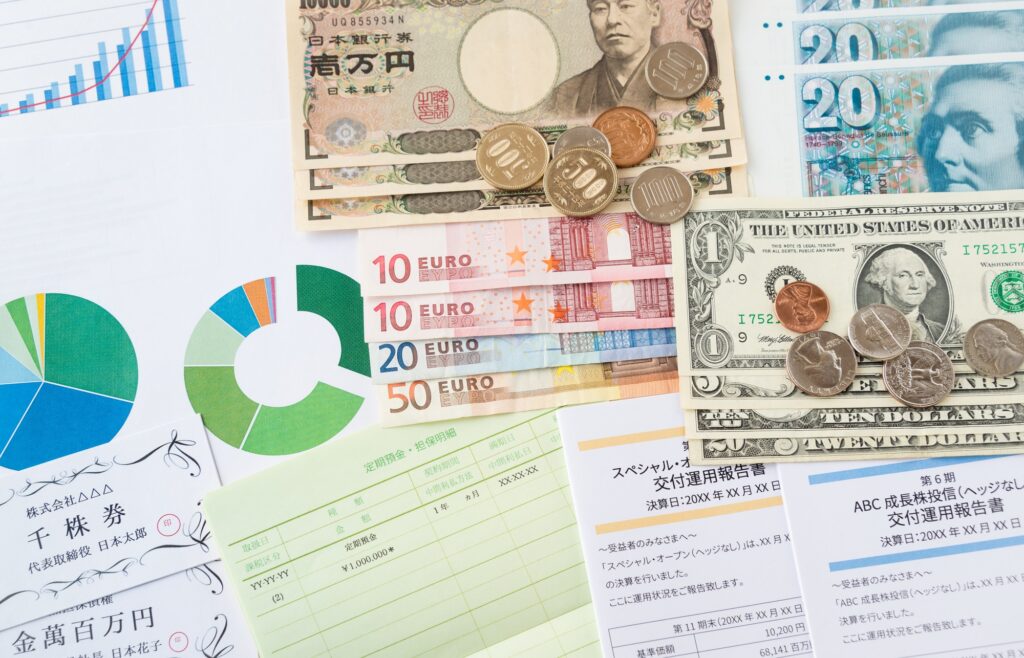M&A 'Business Transfer': An Explanation of the Procedure - What are the Advantages, Disadvantages, and Points to Note?

For business owners, launching a new venture and getting it on track is no easy task. Similarly, the decision to sell a valuable business to a third party, a process known as “business transfer” in Japanese law, is not something that can be easily decided and executed.
In the context of M&A, you may have many questions about when to choose a “business transfer” as a management decision, what specific procedures to follow when implementing it, and what the advantages and disadvantages are.
In this article, we will provide a clear explanation of the scheme, merits and demerits of a “business transfer”, a significant management decision for business owners, as well as points to note in the procedure.
Features of Business Transfer
A business transfer is one method of M&A where a part or all of a company’s business is sold to a third party. Selling a part of the business is referred to as a “partial sale,” and selling the entire business is called a “complete sale.”
A business encompasses various elements such as intangible assets like “goodwill” and “brand,” intellectual property such as patents and know-how, technology, personnel, management organization, sales channels, licenses and approvals, various suppliers and business partners, and facilities like factories.

While it is generally a principle to bundle these elements when inheriting a business, a distinctive feature of a business transfer is the ability to selectively buy and sell only what is needed.
There are other methods of business succession, such as “company split.”
Reasons Why Buyers Choose Business Transfers
In a survey conducted by Mitsubishi UFJ Research & Consulting in 2020 (Gregorian calendar year) targeting approximately 30,000 small and medium-sized enterprises nationwide, the top two reasons why buyers chose business transfers were as follows:
- They were able to select the assets, employees, and contracts with clients they wanted to acquire – 65.6%
- They were able to avoid taking over off-balance-sheet liabilities and unexpected risks – 29.6%
From the buyer’s perspective, the greatest advantage of a business transfer is the ability to selectively acquire only what they want, while avoiding unnecessary items and risks.
Benefits for Sellers in Business Transfers

Solution to Successor Issues
The biggest problem faced by aging small and medium-sized business owners is the lack of successors.
Shutting down a business can have negative impacts on employees and business partners such as suppliers. Therefore, transferring the business can ensure its continuity.
Ability to Separate Unprofitable Businesses
Even if the main business is doing well, having an unprofitable division can negatively affect the overall management of the company. In such cases, selling the unprofitable business can reduce losses and enable business reconstruction.
Ability to Raise Funds
The funds obtained through a business transfer can be used for strengthening and expanding the main business, or investing in technology development and facility enhancement for new businesses.
Ability to Preserve the Company
The credibility of the company built over many years, assets such as land and buildings, and relationships with business partners can be preserved by choosing to transfer the business.
Disadvantages for Sellers in Business Transfers

Complex and Time-Consuming Procedures
Unlike corporate transfers, business transfers require the transfer and relocation of various elements necessary for business succession. Therefore, compared to other M&A methods, the procedures are more numerous and time-consuming.
Some procedures, such as contracts with business partners and employment contracts with employees involved in the business, cannot be completed solely between the seller and the buyer.
Special Resolution Required at the General Meeting of Shareholders
*We will explain in detail in the “Points to Note in Business Transfer Procedures” section below.
Corporate Tax is Applicable
Tax is applied to the “transfer profit”, which is the transfer amount minus the book value of the transferred assets. However, if you transfer at a price lower than the book value, it will result in a negative transfer profit. In this case, the negative portion of the corporate tax will be deducted.
Potential Loss of Excellent Personnel
Personnel with the necessary knowledge and experience are required to actually operate the inherited business. Therefore, it is not uncommon for personnel to move at the buyer’s request along with the business transfer.
There is a possibility that some employees may wish to transfer because they find fulfillment in the business, and there is a risk of losing excellent personnel in exchange for the business transfer.
There is an Obligation to Avoid Competition
The Japanese Companies Act stipulates the following non-competition obligations for sellers of businesses:
- Unless otherwise indicated by the parties, within the same municipality and adjacent municipalities, the same business cannot be conducted for 20 years from the date of the business transfer.
- If the transferring company has made a special agreement not to conduct the same business, the agreement will be effective for a period of 30 years from the date of the business transfer.
- Even if the previous two items do not apply, the transferring company must not conduct the same business with the intention of unfair competition.
Process of Business Transfer
The basic process of a business transfer, which involves many procedures, is as follows:
- Listing of transferable assets and creation of a transfer plan
- Estimation of transfer price (valuation)
- Creation of a project summary document
- Selection of the transferee, negotiation, and conclusion of a basic agreement contract
- Resolution of the board of directors
- Conclusion of the business transfer contract (concluded on the condition of approval by the general meeting of shareholders)
- Approval of the business transfer contract by the general meeting of shareholders
- Submission of an interim report
- Notification or announcement to shareholders
- Special resolution of the general meeting of shareholders
- Procedures for changing the name of assets, and contracts with business partners and employees
Key Points in Business Transfer Procedures

Estimating the Transfer Price
When transferring a business, it is necessary to objectively evaluate the value of your own business and calculate the transfer price. While you can directly apply the company valuation method, it can be time-consuming and costly, and the results may vary significantly depending on the calculation method, so it is not highly recommended for small and medium-sized enterprises.
A commonly used method for business valuation is to consider the business value as the total amount of “fair value transfer assets” and “business rights (goodwill)”.
Business rights (goodwill) include intangible assets such as brand, technology, know-how, operating organization, and relationships with clients, which are difficult to monetize. Therefore, a common calculation method is to use the “past 2-5 years’ net profit” × “valuation multiple” as a guideline. The valuation multiple varies depending on the industry and trends.
Submission of Extraordinary Report
Companies that are obligated to submit securities reports must submit an “extraordinary report” in the following cases:
- When the asset amount decreases or increases by 30% or more due to the business transfer, compared to the net asset amount as of the end of the most recent business year
- When sales decrease or increase by 10% or more due to the business transfer, compared to the performance of the most recent business year
Notification or Announcement to Shareholders
When conducting a business transfer, the company must notify or announce to its shareholders about the implementation of the business transfer at least 20 days before the effective date. At the same time, it provides an opportunity for dissenting shareholders to request a share buyback.
Special Resolutions at Shareholders’ Meetings

In the case of a business transfer, if any of the following applies, approval must be obtained through a special resolution at a shareholders’ meeting by the day before the effective date of the transfer.
- Transferring all of the business
- Transferring a significant part of the business
However, there are two exceptions where a special resolution is not required or can be omitted for business transfers.
Simplified Business Transfer
If the book value of the transferred assets does not exceed 20% of the total assets of the selling company, it qualifies as a simplified business transfer and a special resolution at the shareholders’ meeting is not required.
Abbreviated Business Transfer
If the buying company is a special controlling company (a company that holds more than 9/10 of the voting shares), it qualifies as an abbreviated business transfer and it is possible to omit the special resolution at the shareholders’ meeting.
Business Transfer Procedures

In the case of a business transfer, it is necessary to individually transfer tangible and intangible assets such as real estate, equipment, bonds and debts, intellectual property rights, and business rights.
For real estate, this involves procedures for changing the name on the registry, for patent rights and trademark rights, transfer registration procedures are required. Furthermore, there are multiple different procedures such as contracts with trading partners and employment contracts with transferring employees, so it is important to carefully schedule the transfer procedures.
Summary: Advantages and Disadvantages of Business Transfer in M&A
We have discussed the personalityistics of business transfers, the reasons why buyers choose business transfers, the advantages and disadvantages for sellers in business transfers, the process of business transfers, and key points in the procedures of business transfers.
Business transfers, along with share transfers, are often chosen in M&A of small and medium-sized enterprises. However, due to the need for various procedures and contracts, such as the transfer of tangible and intangible assets and contracts with business partners, it is necessary to proceed with caution.
For this reason, we recommend consulting with a law firm that is also an experienced M&A advisor with specialized legal knowledge from the stage of creating a transfer plan, and receiving advice on how to proceed and points to note.
If you want to know more about the benefits and procedures of business succession through M&A, please refer to the following article.
Category: General Corporate
Tag: General CorporateM&A





















